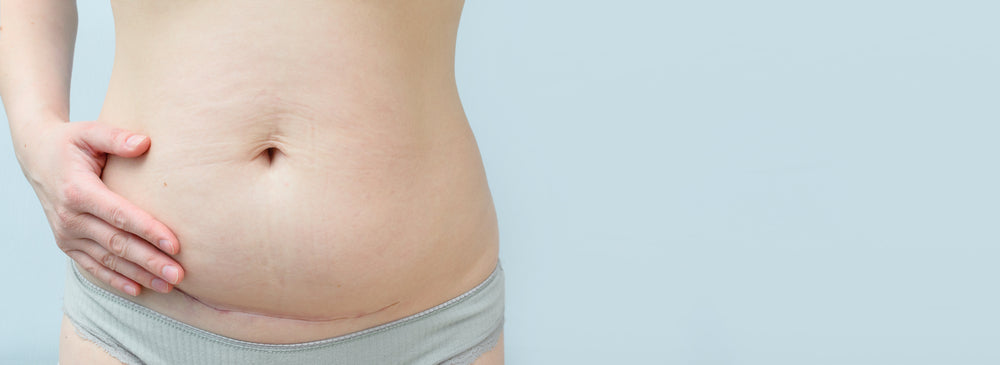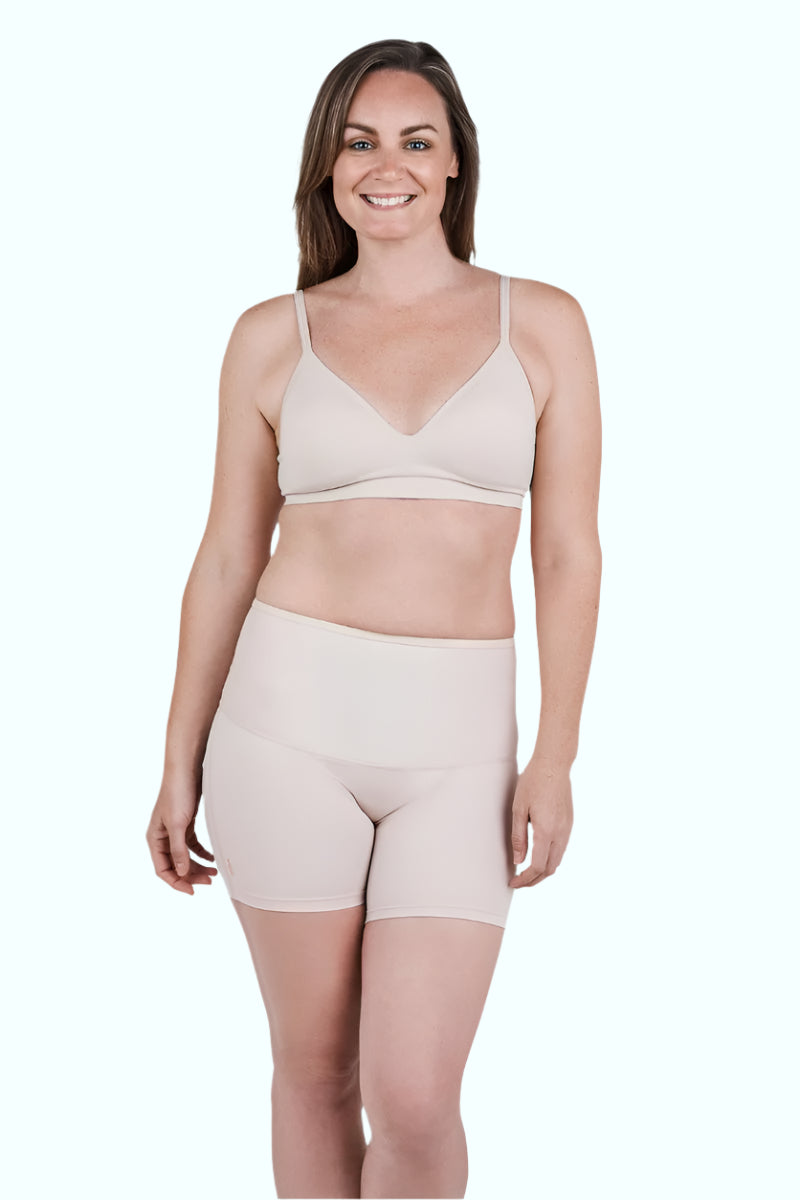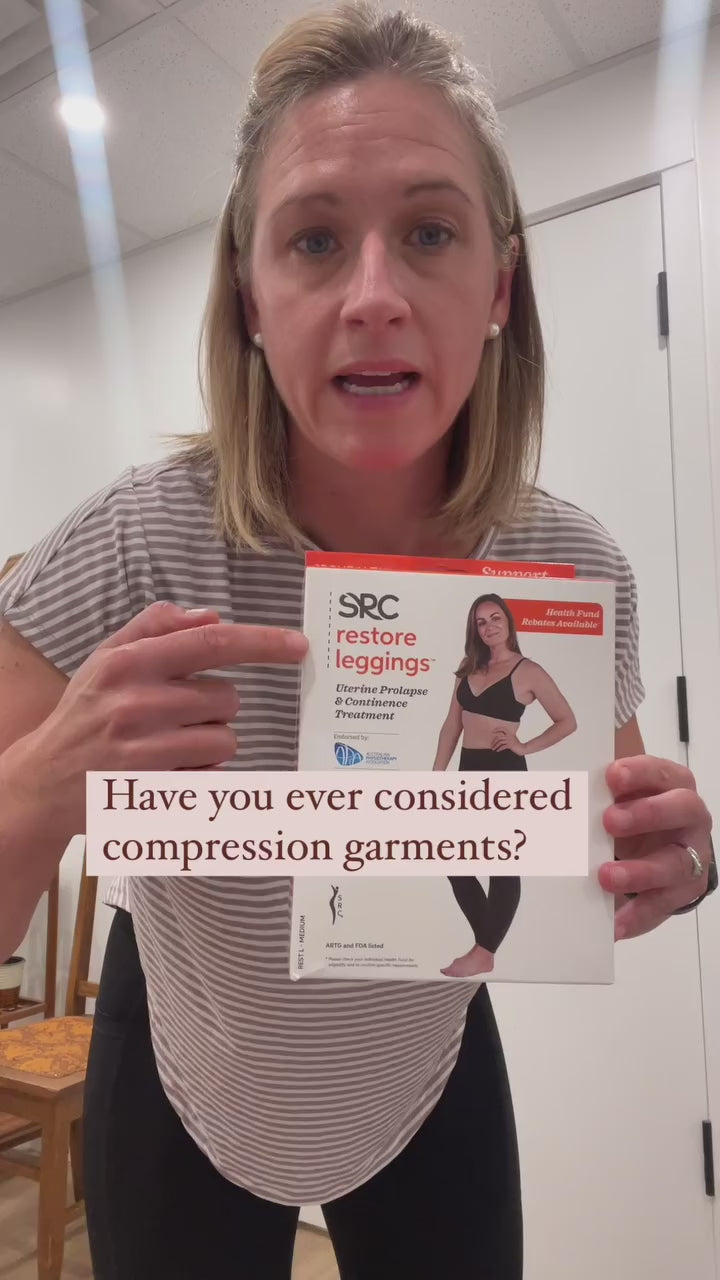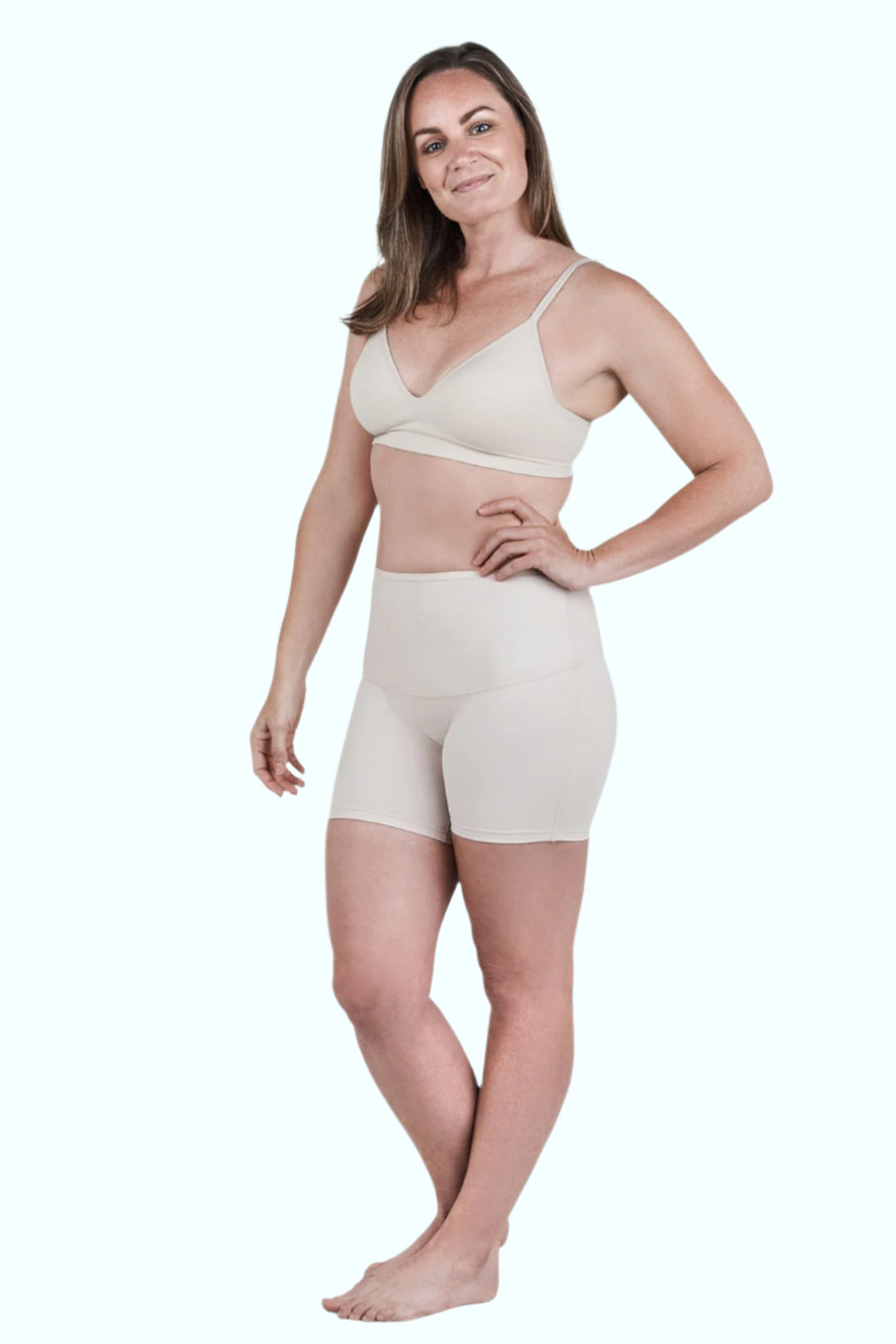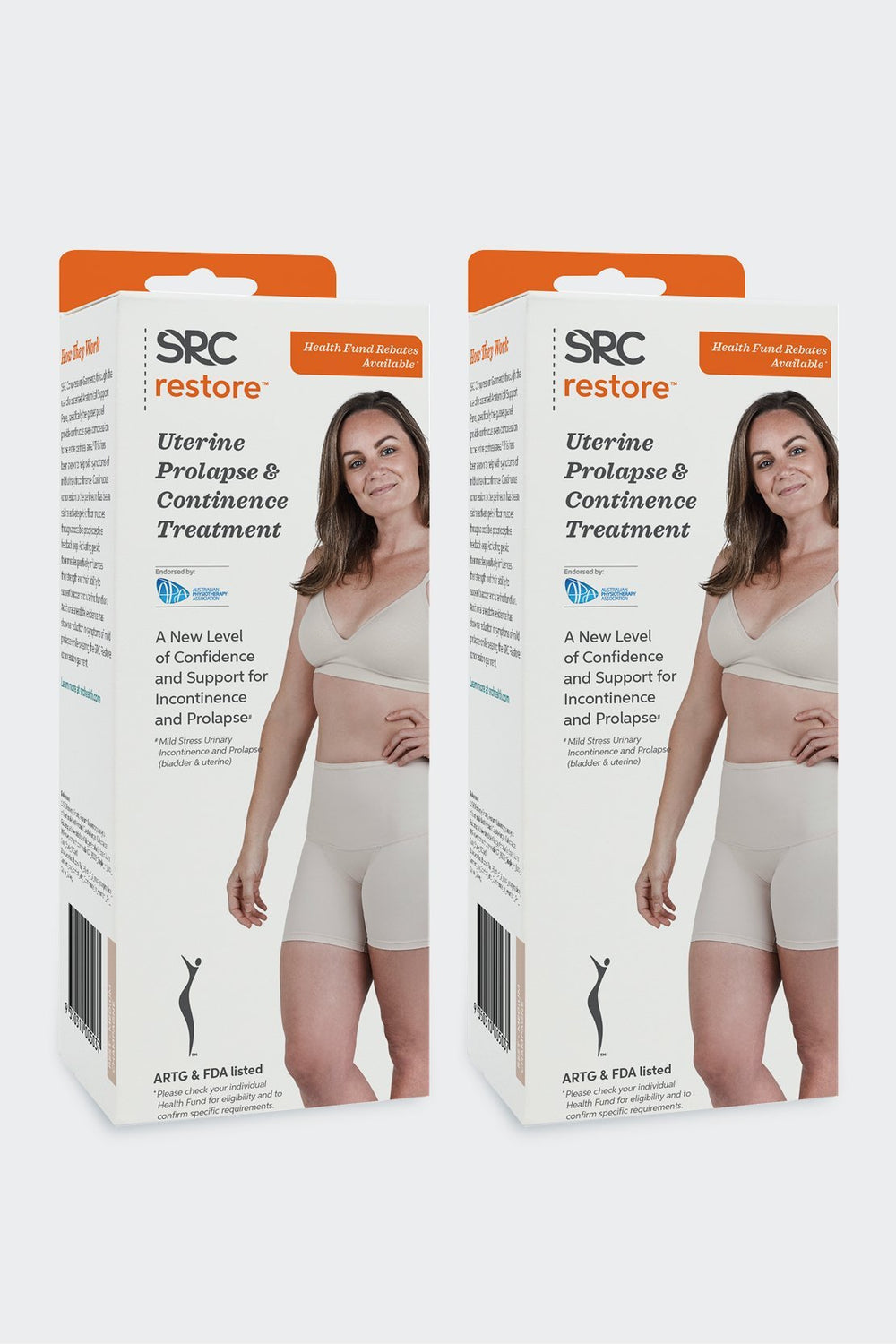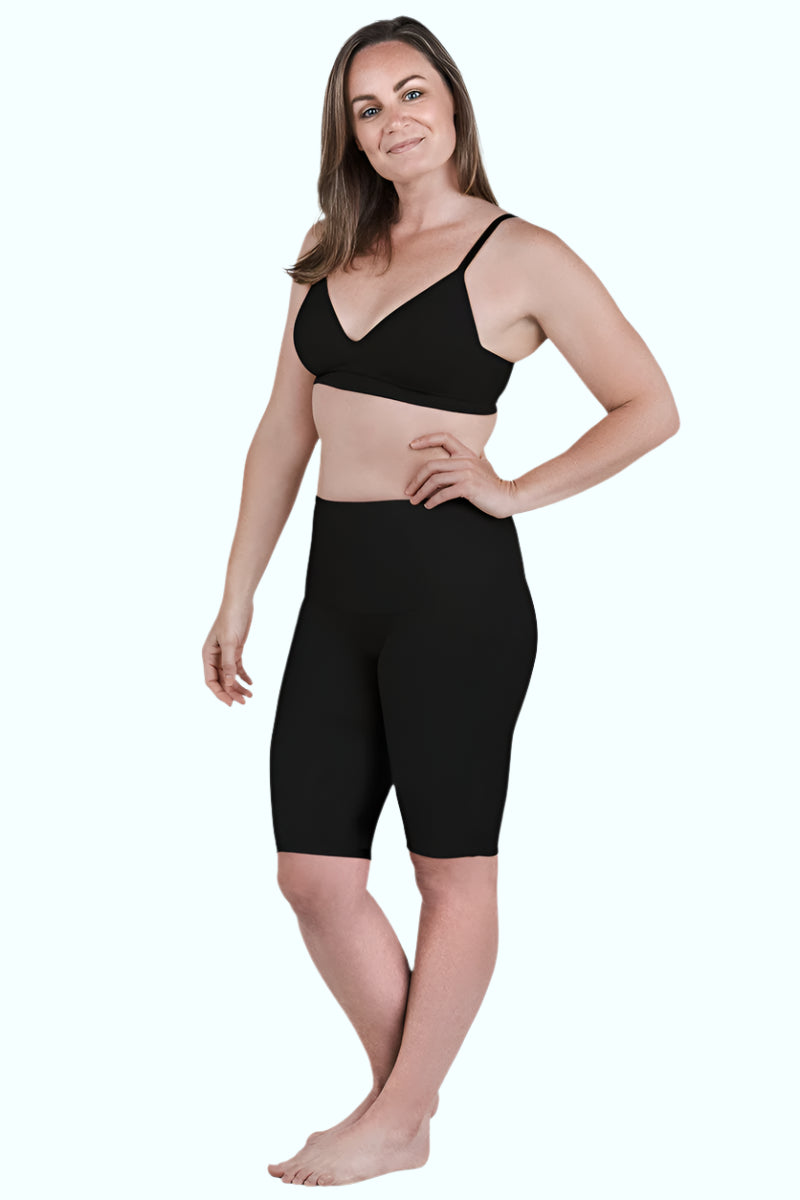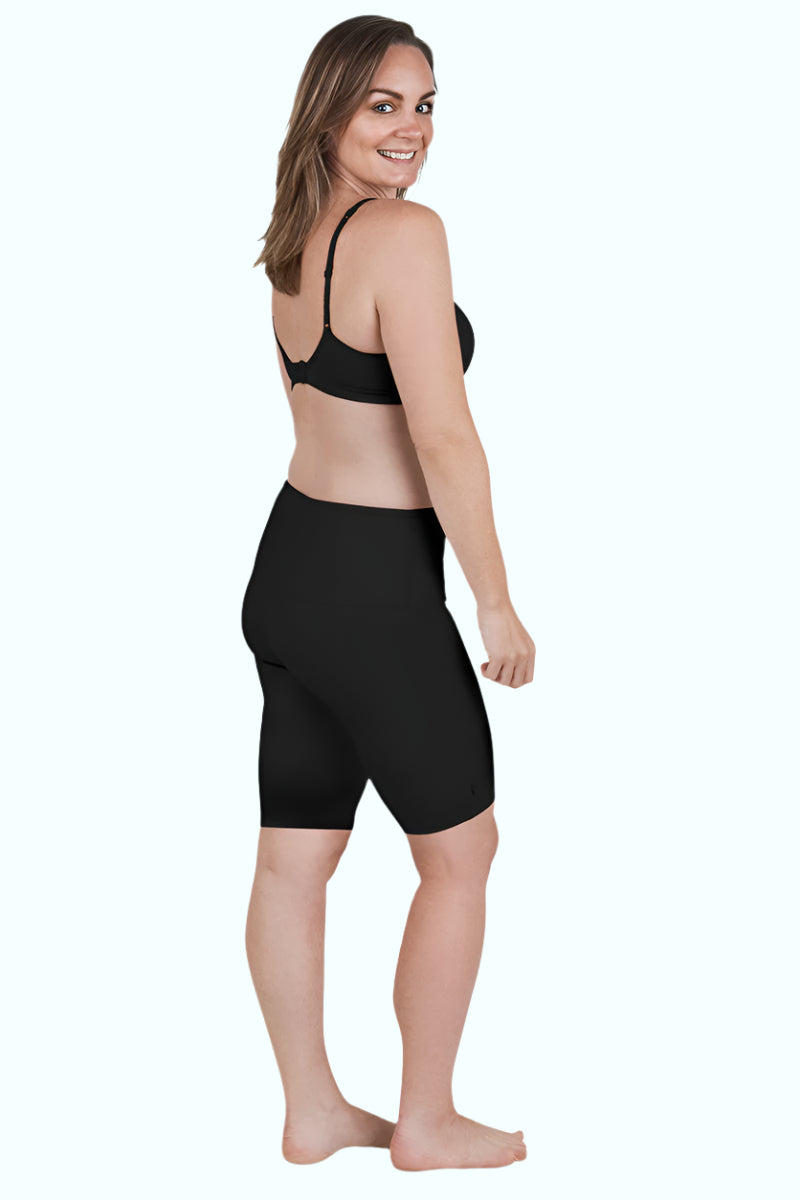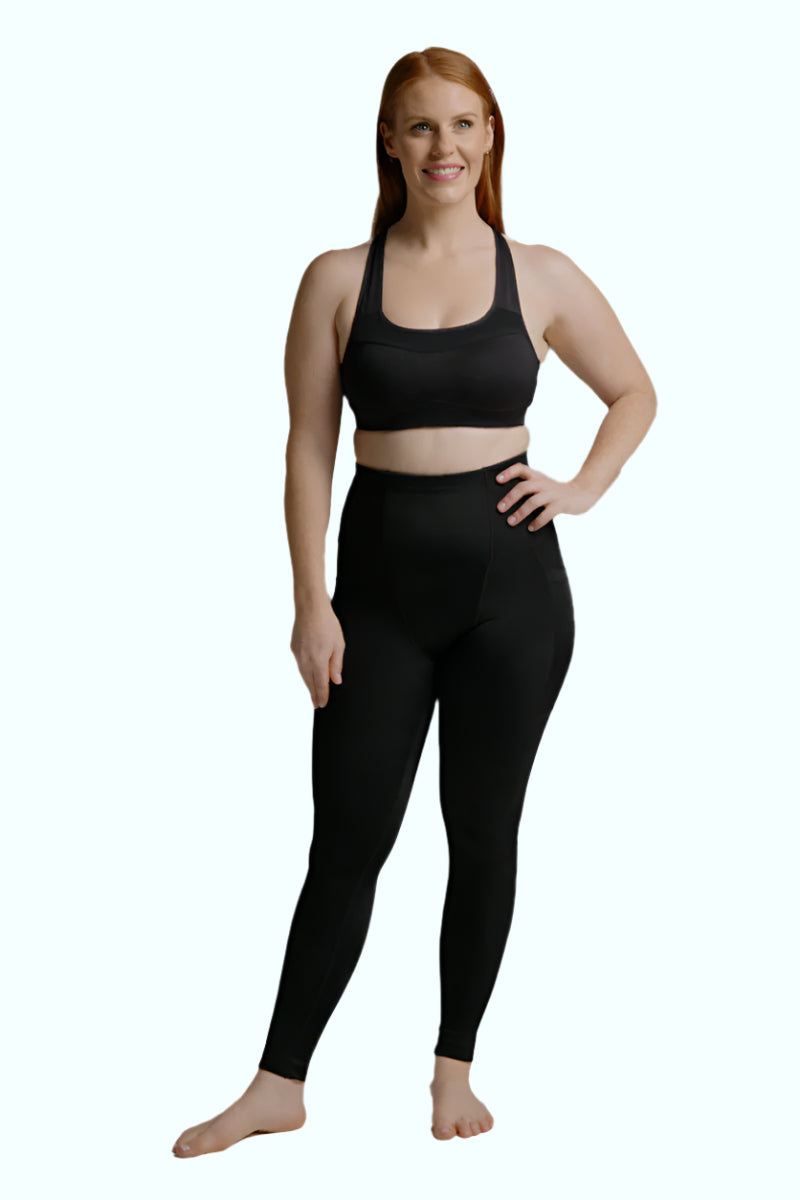What is C-Section Scar Overhang?
A caesarean scar overhang, also known as a C-section shelf, C-section pouch, or C-section pooch, is a combination of scar tissue, body fat, and excess abdominal skin that hangs over the lower abdomen after a caesarean section. For some, it is barely noticeable, while for others, it can be quite pronounced and may cause discomfort or self-consciousness. Understanding what causes this condition and how to manage it can empower mums to take proactive steps in improving their quality of life post-C-section.
What Causes a C-section Pouch?
A C-section pouch is commonly linked to a combination of factors:
Surgical Incision
The incision made during a C-section procedure can create scar tissue that pulls the skin and tissues, leading to a pouch or overhang. The downward force exerted by the baby during the delivery also adds to the intra-abdominal pressure, stretching the abdominal muscles and causing a bulge in the stomach.
Weight Gain
As the baby grows, the extra weight placed on the abdominal muscles can cause them to weaken and stretch, making it harder for them to support the skin and underlying tissues. This can result in the build-up of fat and adipose tissue in the lower abdomen, causing the pouch.
Genetics
Some women are born with weaker abdominal muscles or insufficient connective tissue. This can significantly influence the elasticity and strength of the abdominal wall.
A. How to Treat C-Section Shelf in 4 Ways
A C-section scar overhang is a manageable condition that can be addressed through a combination of lifestyle changes, targeted exercises, and if necessary, medical interventions. Here are some strategies to effectively treat a caesarean overhang:

Non-surgical Approaches
Doing a combination of these approaches and incorporating them into your recovery process can help you flatten or improve your C-section pouch:
Wear Postpartum Support Undergarments
After a C-section, your body can feel sore and you may feel discomfort, especially in the abdominal area. Once you feel comfortable moving around and resuming your daily activities, you can wear a postpartum recovery undergarment to provide support to your weakened muscles and reduce swelling on your incision wound.
Compression garments like SRC C-section Recovery Shorts are specially designed to improve mobility and muscle function postpartum. This type of recovery shorts aids in the healing process while being easy to wear for mums who have just gone through a major abdominal surgery.
Do Regular Exercises
First off, you need to get a green light from your doctor when it is safe for you to start exercising post-surgery. Once you’ve been cleared by your doctor, you can gradually incorporate gentle exercises into your routine to help strengthen your abdominal muscles.
You can start with low-impact activities like walking to improve your circulation and boost your energy levels. Then, slowly ease into gentle core workouts like seated kegels (for pelvic floor muscles), wall sit (for the core and full body), and leg slides (for transverse abdominis).
Keep in mind that any exercise you perform can only lead to discomfort if your core muscles are still healing. Always seek advice from a qualified healthcare provider before beginning any exercise program.
Maintain a Healthy, Balanced Diet
The key to weight loss is taking in fewer calories than you burn. However, while recovering from a C-section, it’s important to focus not just on calorie intake but also on consuming nutrient-rich foods that support your healing process and overall health.
Incorporate a variety of fruits and vegetables, lean proteins, and whole grains into your diet to ensure you’re getting a wide range of vitamins, minerals, and antioxidants. Limit sugary and processed foods that offer little nutritional value as they hinder your weight loss efforts. Lastly, listen to your body and respond with action and compassion.
B. Surgical Approaches
Surgical procedures provide a more immediate solution on how to flatten a C-section pouch. Before resorting to this method, it’s important to consult with a medical professional to discuss expected outcomes and potential risks to ensure they align with your health and aesthetic goals.
Abdominoplasty (Tummy Tuck)
This is a cosmetic or reconstructive surgical procedure performed to tighten loose muscles after a C-section or remove extra loose skin from the abdomen after a massive weight loss. It doesn’t only create a firmer and smoother stomach, but can also help alleviate pain, improve bladder function, and reduce itching or skin irritation caused by excess skin.1
It’s important to note, however, that abdominoplasty is not considered a substitute for healthy lifestyle changes, weight loss, or exercise. Reconstructive surgery for C-section pouch removal is only recommended by many medical practitioners after the right body shape is achieved through dieting and exercise.
How is a C-section pouch different from a diastasis recti?
A C-section pouch refers to the overhanging skin and fat that occurs after a C-section. Diastasis recti, on the other hand, is where the abdominal muscles separate during pregnancy and may cause physical discomfort that does not normally happen with a C-section pouch, including lower back pain, constipation and bloating.
Both conditions can occur simultaneously, but they require different treatment approaches. A C-section pouch can be managed through a healthy diet, exercise, or tummy tucks, while diastasis recti is treated with physical therapy, corrective exercise, surgery, and compression garments.
How long does it take for a postpartum belly to naturally disappear?
Generally, it takes around six weeks for your uterus to contract to its pre-pregnancy size and lose the weight you gained during pregnancy.2 However, this may take longer for women with less elastic skin as their bodies may take more time to adjust post-pregnancy. So, don’t worry if you don’t see immediate changes in your body. Everyone’s timeline is different, and recovery is a process that requires patience and self-compassion.
Embracing Your C-Section Scar Overhang
How can you feel good about your C-section scar overhang? Understanding the significant process it took you to bring life into the world and looking at your body changes as a testament to your strength is a powerful way to embrace your body. Each scar and stretch mark tells a story of how your body has achieved something as amazing as carrying and nurturing a life and bringing them into the world. Use positive words when talking about your body and incorporate self-care rituals that can make you feel good about yourself.
If you’re struggling with body image issues, consider speaking with a professional to help you develop a healthier relationship with your body. You may also try consulting with postpartum specialists such as dietitians or physical therapists who can provide personalised advice and support your recovery.
Lastly, be kind to yourself. Understand that recovery takes time and it’s normal for your body to look and feel different after birth. Allow yourself to heal at your own pace—with kindness and without judgement.
FAQ
1. What is the difference between the stomach overhang and the mommy pooch?
Also known as pannus stomach or apron belly, stomach overhang refers to the excess fat and skin that hang down over the lower abdomen. It is usually a result of pregnancy, significant weight loss, or ageing. Mommy pooch, on the other hand, is a bulge in the middle of the abdomen that occurs due to diastasis recti, where the abdominal muscles separate during pregnancy. It is typically less about hanging skin and more about weakened muscles and a protruding abdomen.
2. How do you keep C-section scars clean with overhangs?
-
Check the incision for signs of infection such as redness or swelling.
-
Avoid soaking in a hot tub or going swimming until your doctor gives you permission to do so.
-
Gently wash the scar with soap and let warm water run over it.
-
Avoid putting any type of lotion or antibiotic cream on the C-section scar overhang until it’s completely healed.
-
Do not scratch your incision to prevent potential infection. You can wear manicure gloves to ensure you don’t touch the scar with your bare fingers.
-
Maintain a healthy diet and avoid smoking to help your scar heal more easily.
-
Massage the area around the C-section scar to help minimise skin puckering.
3. Does belly overhang go away?
While belly overhang can be reduced, it may not completely go away without surgical intervention (tummy tuck). Doing regular exercises to burn fat, improving diet to maintain caloric deficit, and using firming creams to improve skin elasticity can help improve the appearance of the belly overhang.
References:
-
https://www.betterhealth.vic.gov.au/health/conditionsandtreatments/abdominoplasty-tummy-tuck
-
https://www.webmd.com/baby/when-does-postpartum-belly-go-away


